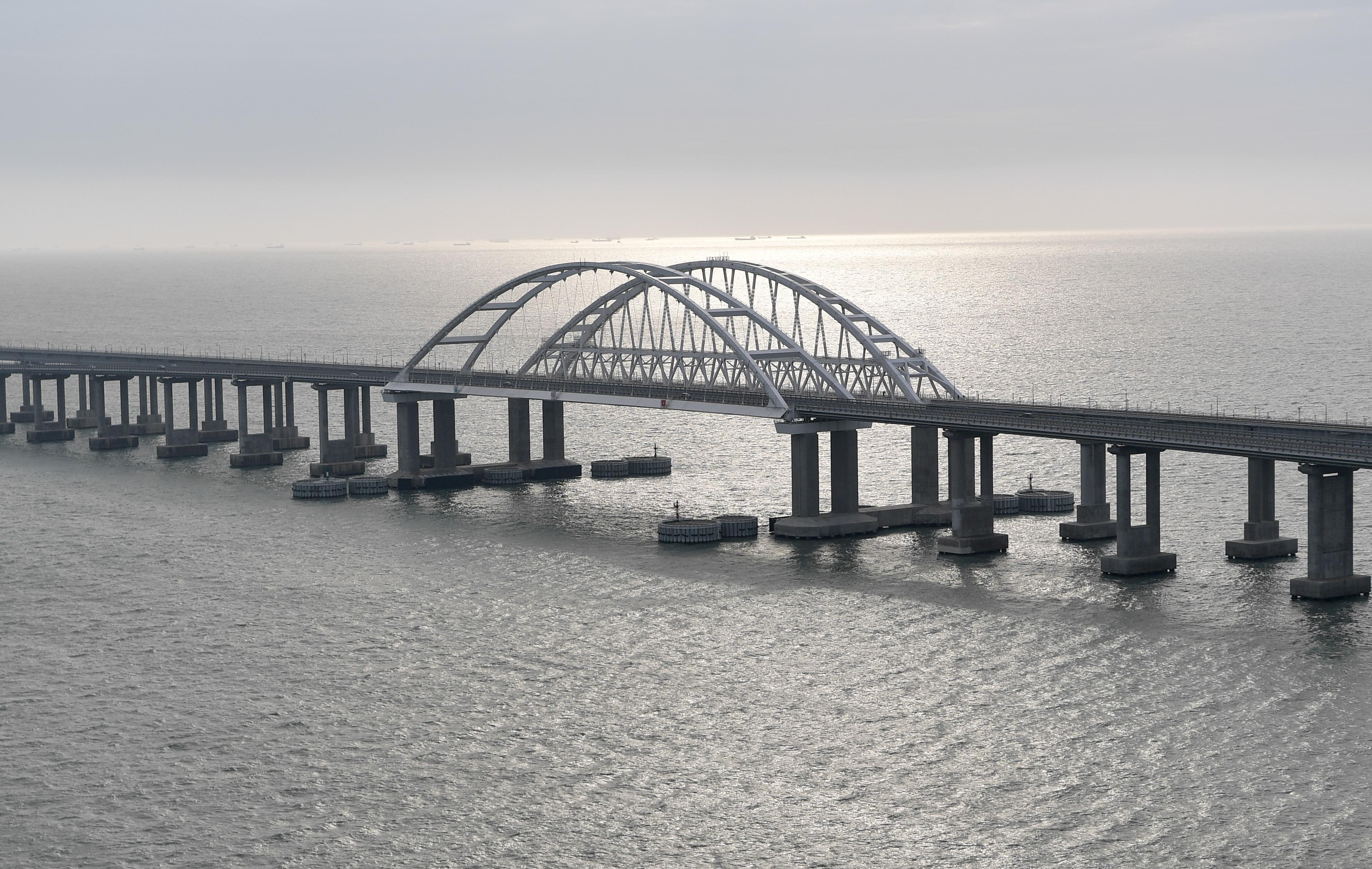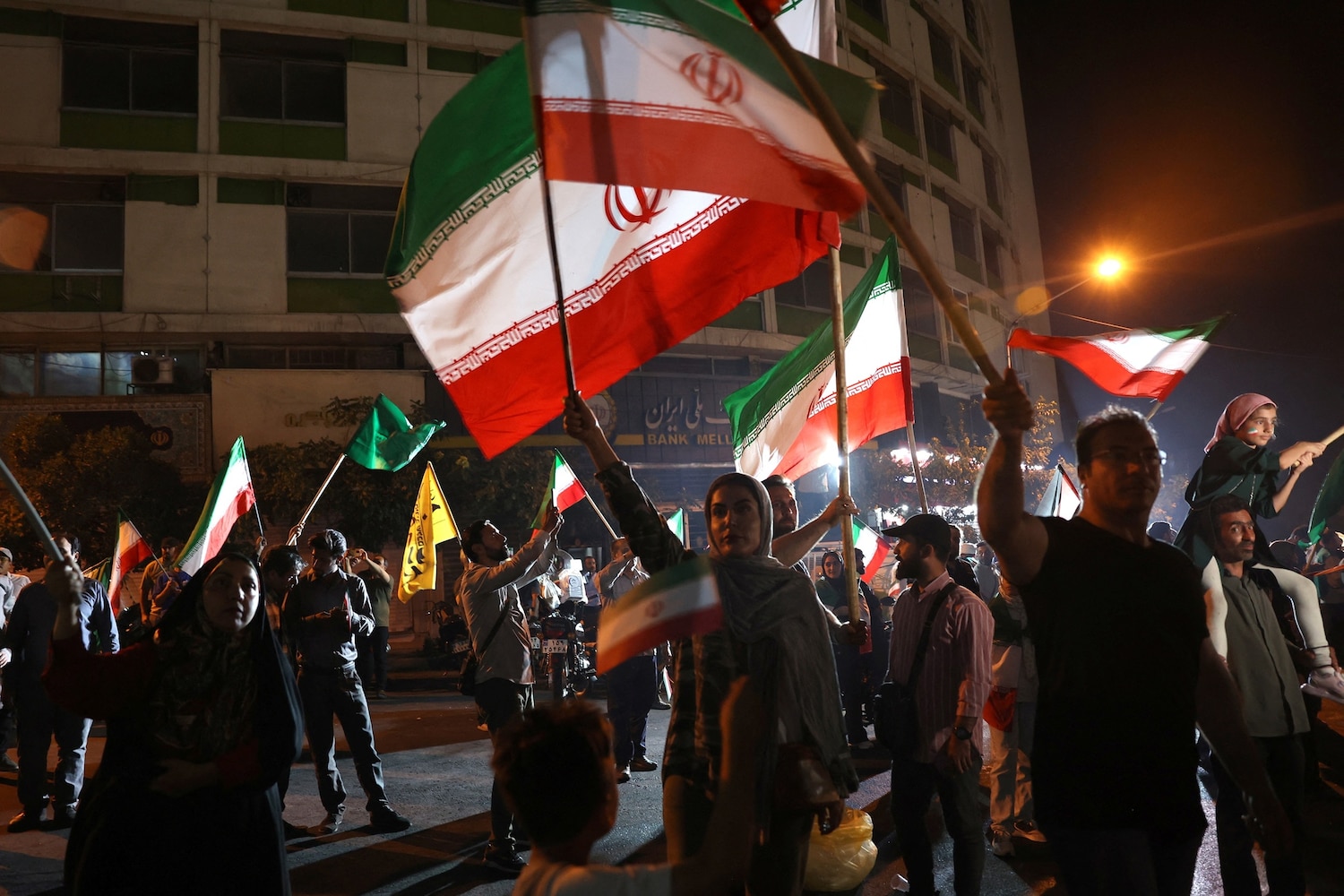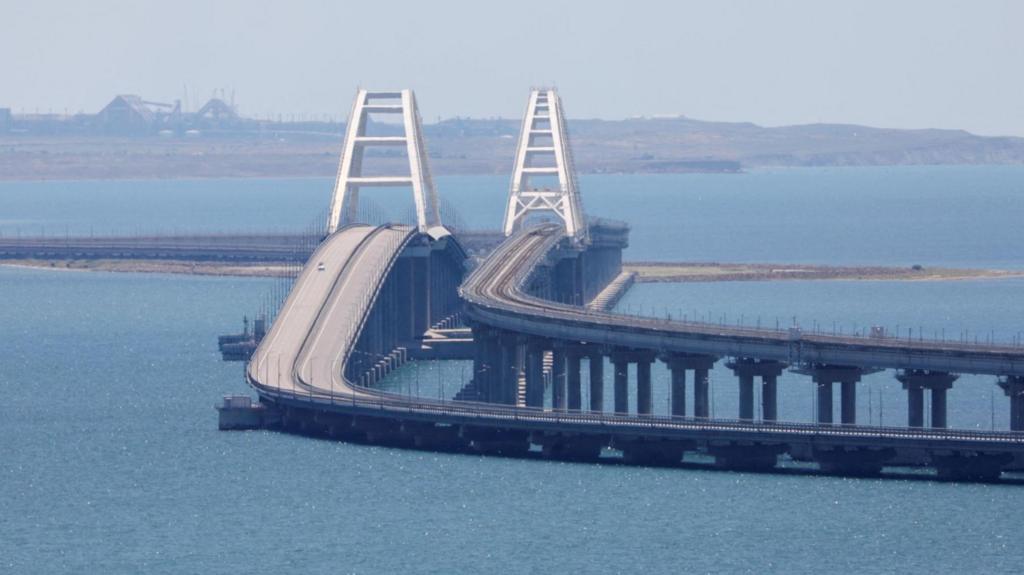
It is now the fourth year of Russia’s so-called special military operation. While Russia continues its efforts, it is now Ukraine that is frequently carrying out special operations against Moscow. These actions have targeted critical Russian assets, including strategic bombers and logistical arteries like the bridge connecting the Russian mainland to occupied Crimea.
One such operation recently unfolded on June 3, when Ukraine attacked Russia’s Kerch bridge in occupied-Crimea with underwater explosives. This marked the third attack by Kyiv against the bridge since the start of the full-scale invasion in 2022. The Security Service of Ukraine (SBU) claimed responsibility for this latest assault.
The SBU stated that the operation targeting the Kerch Bridge was planned over several months. They announced the use of the equivalent of more than a metric ton of TNT, specifically stating 1,100 kg of explosives were detonated. The SBU published video footage of the blast, which they said likely signaled they also had access to CCTV cameras on the bridge.

In a statement on their Telegram channel, the intelligence services declared, “The SBU conducted a new unique special operation and struck the Crimean Bridge for the third time – this time underwater!” The SBU also added, “Previously, we hit the Crimean Bridge twice, in 2022 and 2023. So today we continued this tradition underwater.” The attack reportedly occurred at 4:44 a.m. on June 3, according to the SBU, who added there were no civilian casualties.
The Ukrainian Security Service claimed that several pillars were damaged in the early-morning operation. They further stated that the underwater support pillars were “severely damaged at the seabed level — aided by the equivalent of 1,100 kg of TNT.” As a result, the SBU claimed the bridge was “effectively in an emergency condition.” However, the Washington Post noted it could not independently verify these claims, and the exact extent of the damage was not immediately clear.
Following the morning explosion, Russian authorities temporarily suspended vehicle traffic on the Crimean Bridge. Local Telegram channels in Crimea also reported a second explosion Tuesday afternoon, which led to the bridge being closed to traffic for several hours again. Despite the closures, Russian authorities soon resumed traffic after the initial morning suspension, with the official Russian outlet providing status updates on the bridge confirming it was reopened and functioning as normal between 04:00 and 07:00 local time, though it gave no reason for the closure.
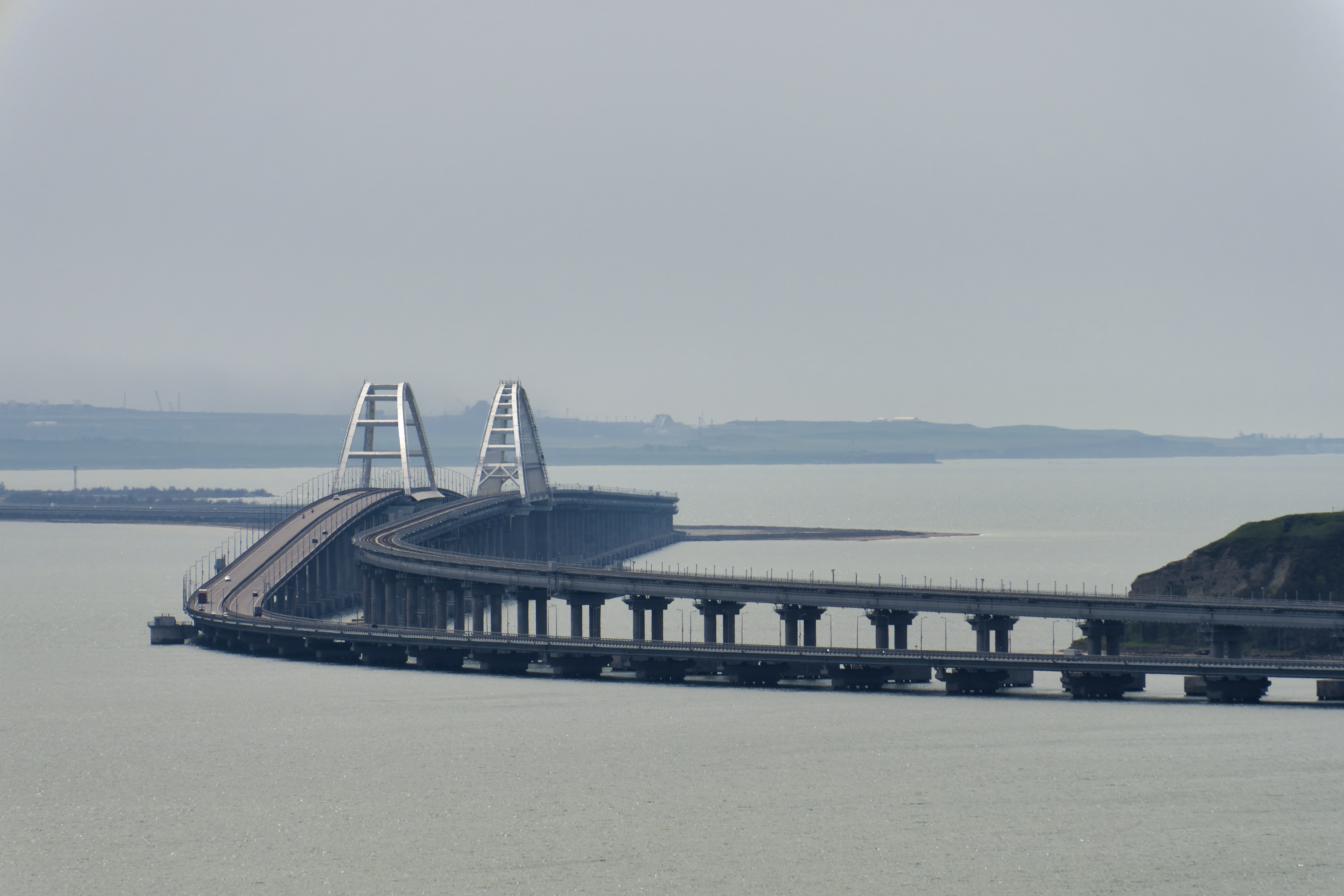
Russia’s Kerch bridge, spanning the Kerch Strait, is the only direct line between the transport network of Russia and the Crimean peninsula, which Moscow annexed from Ukraine in 2014. It is a 19-kilometer-long structure, comprising separate roadway and railway sections supported by concrete stilts, which transition to wider spans held by steel arches allowing ships to pass between the Black Sea and the Azov Sea.
For Russia, the Kerch bridge serves as a vital logistical artery. Vasyl Malyuk, the head of the SBU, said the bridge throughout the full-scale invasion has been an important source for Russian logistics. Trains crossing the bridge reportedly carry weapons, vehicles, and fuel, sustaining the force in Crimea.
Crimea itself was one of the main launching points for Russia’s attack in February 2022, with Russian forces using the bridge to reach the peninsula before moving on to seize parts of Ukraine’s southern Kherson and south-eastern Zaporizhzhia regions. Jon Sweet, a former US Army Intelligence Officer, highlighted that from Crimea, Russia “can exert influence throughout the entirety of the Black Sea region.” He added, “Retention of the peninsula, therefore, is essential.”
Sweet emphasized the bridge’s role as “the logistical lifeline between Russian forces occupying and defending Crimea and the Russia mainland.” He stated that “Daily rail and vehicular traffic crossing the bridge sustain the force.” He concluded that “If destroyed, Crimea would be cut off – in essence, creating a siege warfare like scenario.”

Beyond its military function, the Kerch bridge holds significant symbolic value. It was built after Russia forcibly annexed Crimea in 2014 and opened in 2018, becoming a flagship project for Russian president Vladimir Putin. For Ukrainian officials, it has been “top of mind” to go after what they see as Vladimir Putin’s crown jewel, reflecting his imperial ambitions following the 2014 annexation.
Lt. Gen. Vasyl Maliuk, head of the Security Service, stated, “There is no place for illegal Russian structures on the territory of our state.” He added, “The Crimean Bridge is a completely legitimate target, especially considering that the enemy used it as a logistical artery to supply its troops. Crimea is Ukraine, and any form of occupation will be met with a firm response.”
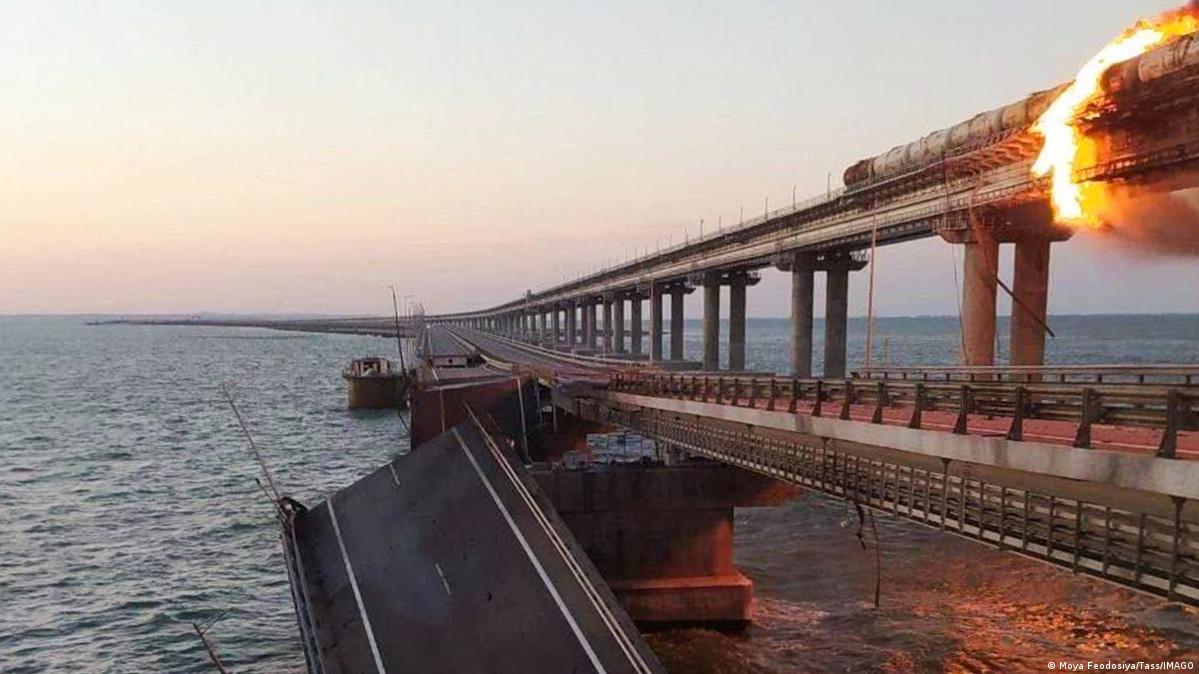
The 2022 attack on the bridge occurred on Oct. 8, just one day after Russian President Vladimir Putin’s 70th birthday. Kyiv used a truck packed with explosives detonated while crossing the bridge. This ignited a massive fireball that engulfed a fuel train traveling nearby and caused extensive damage to several spans of the bridge. Following the damage, Moscow was only able to fully reopen the bridge in May 2023.
The second attack took place in July 2023. Ukraine’s SBU used a self-developed “Sea Baby” sea drone to strike the Kerch Bridge. This attack delivered 850 kilograms of explosives and caused significant damage, mainly to the roads. However, the railway line was not damaged in this attack, limiting the immediate impact on Russian logistics.
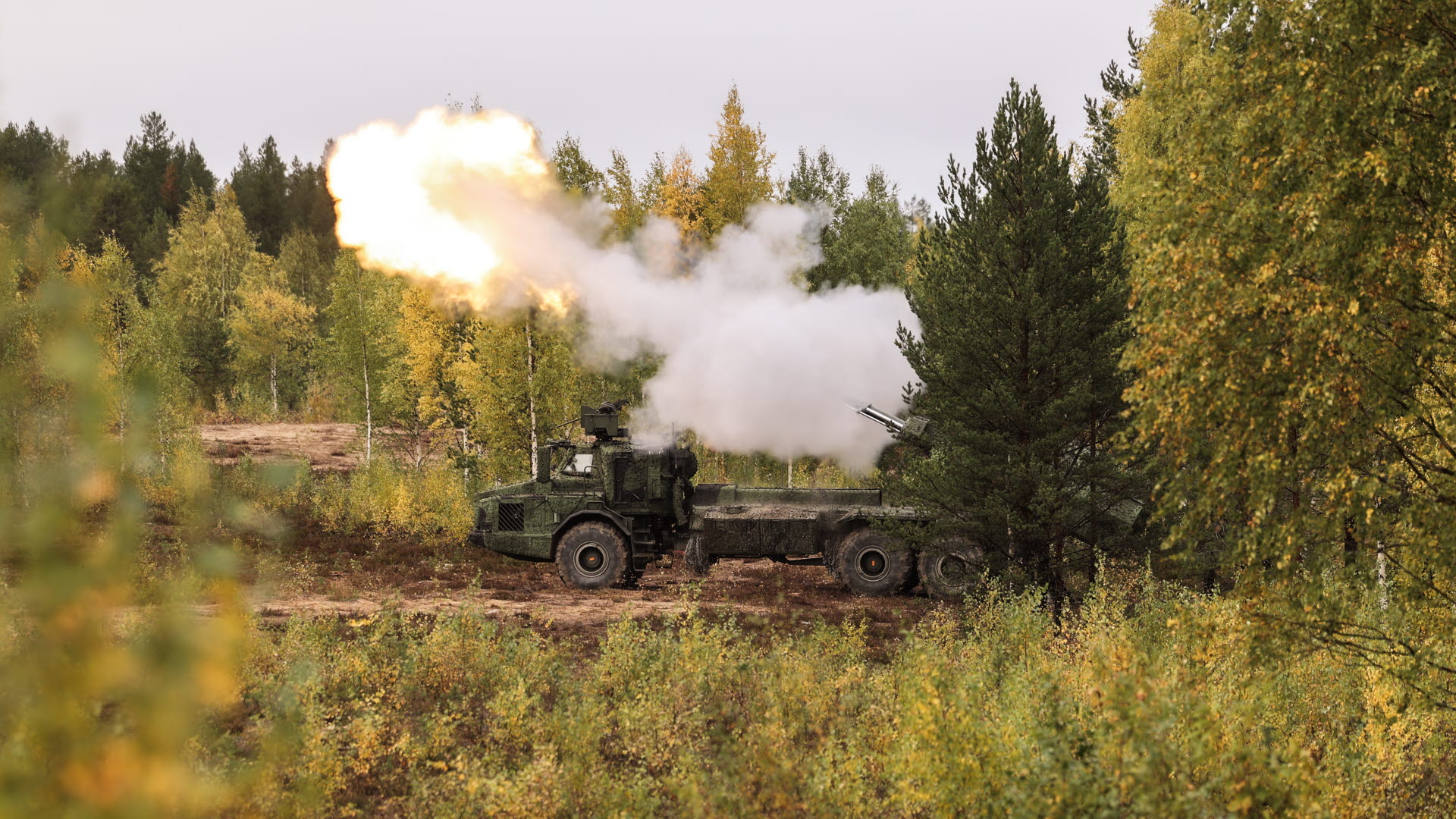
These asymmetrical war efforts from Kyiv are seen as a necessity. As Ukraine races to protect itself, it aims to “take out the archers,” given its lack of air defense to destroy the “arrows,” meaning Russian missiles and drones. These operations are part of a wider strategy to undermine Russia’s ability to wage war against Ukraine.
Without sufficient air defense support from the West, Russia has relentlessly bombed Ukrainian cities. As a result, Ukraine has taken covert action to weaken Moscow’s abilities to go on the offensive, striking deep inside Russian territory and targeting critical infrastructure like the bridge.
Due to Ukrainian attacks, the Russians have been forced to look for other supply routes. This has gradually reduced some of the strategic importance of eliminating the bridge, as Russia has to resort to ferrying more of its supplies for its army in Ukraine’s south, slowing its operations.

Moscow has significantly improved its defenses to protect the structure from Ukrainian strikes since the earlier attacks. These defenses include underwater barriers and advanced air defense systems. Ukrainian Navy Commander Oleksiy Neizhpapa noted that Russia built a multi-layered defense system, making it challenging for sea drones to get closer to the bridge.
Russia also added a second line of boom barriers, made up of 21 barges, and installed piers and metal fencing around the bridge’s foundation to protect it from surface and underwater drone attacks. Russian media have also reported that fighter jets, divers, and even trained dolphins are involved in guarding the bridge from threats above and below the water.
Serhii Kuzan, chair of the Ukrainian Security and Cooperation Center and former adviser to Ukraine’s Ministry of Defense, commented, “Russia is using all available methods to safeguard the Crimean Bridge from destruction.” He added, “This illegally constructed structure in temporarily occupied Crimea is critically important to Vladimir Putin and Russian logistics.”

